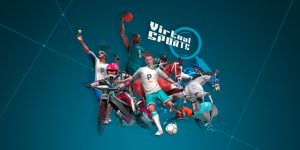The virtual racing world has grown remarkably over the past few years, evolving from simple arcade games to highly sophisticated and immersive experiences. Technological advancements have primarily driven this transformation, particularly in sim racing rigs. These setups are no longer just about having a wheel attached to a desk. Today, they encapsulate a broad spectrum of technologies designed to replicate the real-life experience as closely as possible. As you look to the future, several trends and innovations stand out, promising to redefine the boundaries of virtual racing.
Immersive Technology for Enhanced Realism
One of the most significant trends in the development of racing simulators is the pursuit of unparalleled realism. Immersion technologies have been integrated, including virtual reality (VR), augmented reality (AR), and motion capture systems. VR, in particular, offers racers a 360-degree view of their environment, making the experience as lifelike as possible. Coupled with high-fidelity sound systems that replicate engine noises and the sounds of the track, the level of immersion has never been higher.
High-Fidelity Feedback Systems
Feedback systems have come a long way from the simple force feedback steering wheels of the past. Today’s systems can replicate a wide range of sensations, from the texture of the track surface to the impact of collisions. High-fidelity force and tactile feedback systems provide racers with nuanced information about their vehicle’s behaviour, including tyre grip, terrain changes, and more. These systems make it possible for drivers to fine-tune their skills with a level of precision that was previously unimaginable.
Customisation and Personalisation
Customisation and personalisation significantly influence the evolution of virtual racing. The trend empowers racers to tailor their setups according to precise preferences, offering various components for constructing the perfect rig. Choices extend to steering wheels, pedals, shifters, and seating arrangements, aligning closely with individual styles. Furthermore, this customisability encompasses software adjustments, allowing for modifications to car settings, weather conditions, and game physics for an optimised experience. Innovations in user interface design also enhance the process, making customisation more intuitive and user-friendly, inviting racers to dive deeper into personalising every aspect of their virtual journey.
Connectivity and Multiplayer Experiences
The rise of online multiplayer games has been a game-changer for the virtual racing community. Racers from around the world can compete against each other in real-time, bringing a competitive edge to the experience that was hard to achieve in the past. This connectivity has also facilitated the growth of online leagues and championships, providing a platform for competitive racing at all skill levels—the future promises even greater connectivity, with the potential for cross-platform games and more integrated online communities.
Sustainability and Accessibility
As technology progresses, the push towards sustainability and accessibility in racing simulators gains momentum. Manufacturers are now incorporating energy-efficient components and eco-friendly materials into their designs. Concurrently, strategies aim to reduce costs and simplify operations, broadening the appeal of virtual gaming across diverse demographics. Its future vision encompasses technological sophistication, immersive experiences, and a commitment to environmental responsibility and universal access. Initiatives to recycle and repurpose equipment further contribute to sustainability. At the same time, developments in user interface design and support systems enhance ease of use, inviting enthusiasts of all backgrounds to join the virtual racing community.
Conclusion
Sim racing rigs are at the forefront of a revolution in virtual gaming, driven by technological advancements and a relentless pursuit of realism. From immersive VR setups to highly sophisticated feedback systems and the ability to personalise and compete in a global online community, the future of virtual racing is bright. These trends and innovations promise to make the experience more realistic, engaging, and accessible to racers worldwide. As you look forward, it’s clear that the evolution of virtual racing is far from over, with new technologies and ideas continuing to push the boundaries of what’s possible.



